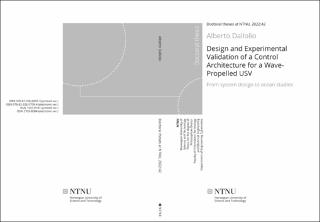| dc.description.abstract | In a time of unprecedented anthropogenic pressures on the oceans, preserving the health of underwater ecosystems is of the uttermost importance. Since the beginning of human exploration of the oceans, ship-based ocean monitoring methodologies have dominated the stage, providing the ability to gather isolated point measurements mostly biased by poor scalability and continuity in space and time. The advent of robotic platforms has revolutionized ocean observation practices, enabling measurements on scales logistically and technologically impossible using traditional techniques.
Wave-propelled unmanned surface vehicles (USVs) constitute a very unique class of marine robots that, unlike common platforms, are not constrained by onboard energy limitations since their propulsion is entirely due to waves. This makes them capable of performing long-duration operations and, therefore, of observing oceanographic phenomena at more appropriate spatio-temporal scales. The glaring advantages that, from a scientific point of view, come along with this class of USVs are however hindered by numerous navigation and control challenges. As their propulsion and heading rely on the environment, stable course-over-ground (COG) control can be a challenging task when environmental forces and forward propulsion are in the same order of magnitude. Moreover, navigation performances are likely to deteriorate when hostile sea conditions arise, to a point in which maneuverability is reduced and, eventually, controlling the vehicle is no longer possible.
The principal contribution of this thesis relates to the design of a navigation control system that robustly governs the course of the commercially available, wavepropelled vehicle AutoNaut, when the environment generates drift forces acting on its body. In particular, the control design relies on extensive analysis of the nonlinearities appearing in the USV’s steering dynamics model, mainly caused by the low speed relative to water and to ground observed when environmental drift forces and the force due to wave propulsion are in the same order of magnitude. Additional contributions of this work are related to i) the design, implementation and experimental validation of the hardware and software onboard architectures, and ii) showcasing two applications in which the proposed system is employed in ocean studies. | en_US |
